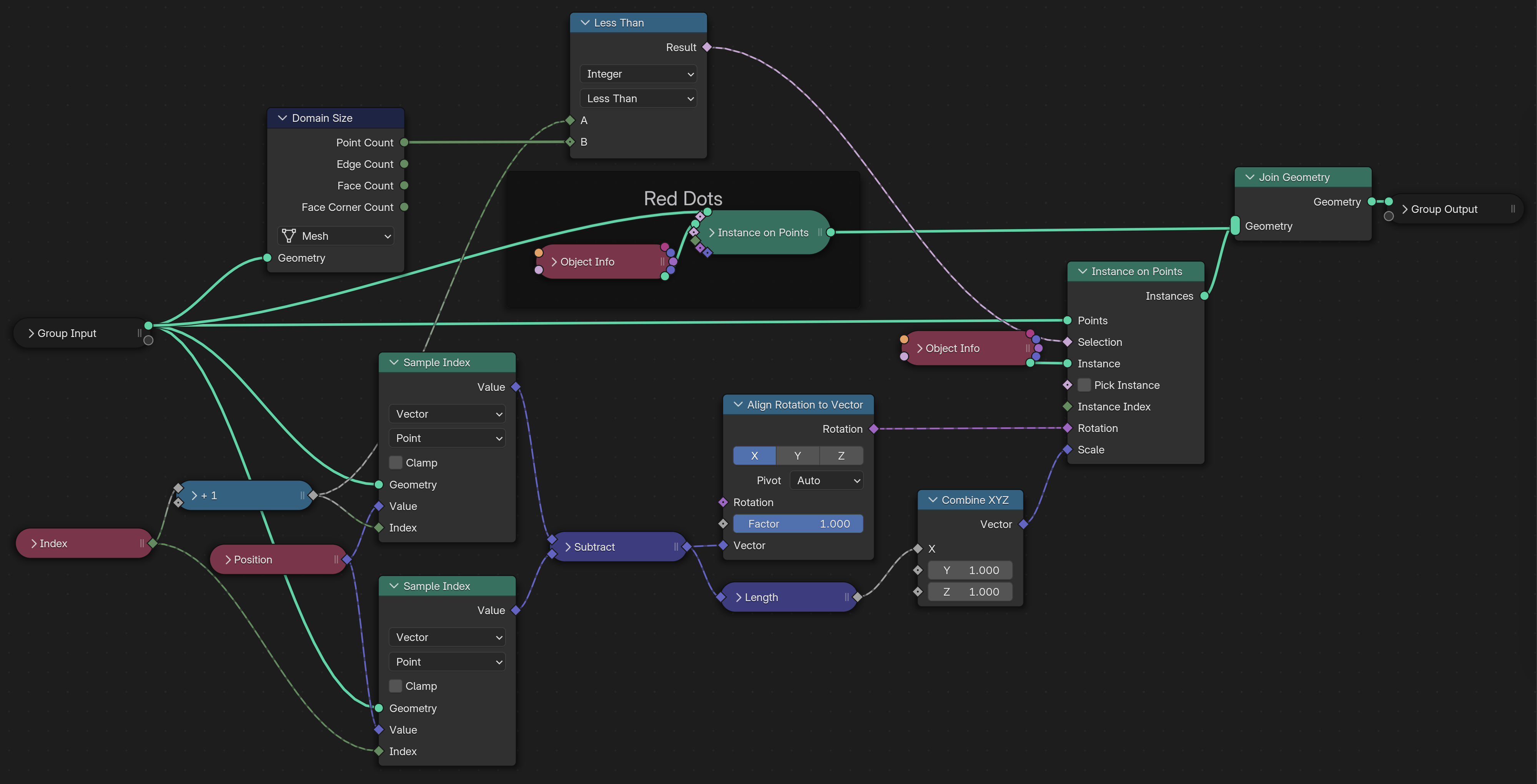I'm trying to draw lines between vertices on this mesh. For this sphere it'll basically give me a wireframe, but I'm after a node setup that can include unattached meshes/faces/etc that are floating outside the main shape. I've got a couple images included here to show what my node setup is making happen, and where I've gotten stuck. (Mesh to Volume -> Volume to Mesh on their own can't give me the results I'm after)
I think what's happening is the extrusions are always starting at the same index point, regardless of what the other inputs are? That's the only explanation I can think of for them all connecting to one point instead of each other. So I either need to use another method entirely, or find a way to make sure the indeces are getting used in order, rather than going 1,2 -> 1,3 -> 1,4 -> etc, when I need 1,2 -> 2,3 -> 3,4 and so on. 







